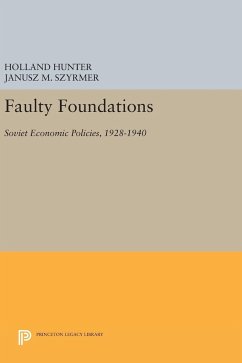Could the USSR have been prepared for World War II more humanely and efficiently? In this first integrated evaluation of Stalin's economic goals and actions, Holland Hunter and Janusz Szyrmer reconstruct and test Soviet results annually and by sector. Addressing historians, political scientists, and economists, the authors build a new, internally consistent, twelve-sector annual record of output and capital growth (assembling and reconciling Western reconstructions of Soviet data) to assess Soviet policy and test how alternative policies might have worked. They point out lessons from the 1930s that can be applied today. The authors analyze the basic steps marking the prewar Soviet drive: agricultural collectivization, head-long investment in heavy industry, autarkic foreign trade, and rearmament. They conclude that the economy's growth potential was misused, that collectivization was a mistake, and that with a slower drive to build heavy industry, living standards could have been higher throughout the 1930s while the ability to withstand invasion would have been stronger. A related implication for the 1990s is that correct prices, small-scale production, and individual initiative are key requirements for an effective Soviet economy. Originally published in 1992. The Princeton Legacy Library uses the latest print-on-demand technology to again make available previously out-of-print books from the distinguished backlist of Princeton University Press. These editions preserve the original texts of these important books while presenting them in durable paperback and hardcover editions. The goal of the Princeton Legacy Library is to vastly increase access to the rich scholarly heritage found in the thousands of books published by Princeton University Press since its founding in 1905.
Hinweis: Dieser Artikel kann nur an eine deutsche Lieferadresse ausgeliefert werden.
Hinweis: Dieser Artikel kann nur an eine deutsche Lieferadresse ausgeliefert werden.








